Lone Star Lake: History with a Waterfront View
One benefit of living in Lawrence is that an escape from the congestion of city-living, like a stretch of land or a county road, is only a 15-minute drive away. Lawrence is far from being a concrete jungle. It has plenty of green spaces to enjoy including several city parks, walking paths, and community gardens. But if you crave a wide-open space where the sound of nature drowns out the noise of traffic, a place to disconnect from technology for more than an hour and enjoy a moment of peace, an option is close at hand.
That place is at Lone Star Lake. The 185-acre man-made lake is a gem of Douglas County. It sits approximately 10 miles southwest of Lawrence and roughly 3 miles southwest of the unincorporated town of Lone Star in Marion Township. For over eighty years, the lake has provided Douglas County a quiet oasis for camping, fishing, and water recreation. Plus, the road encircling the lake makes a superb route for walkers and bicyclists.
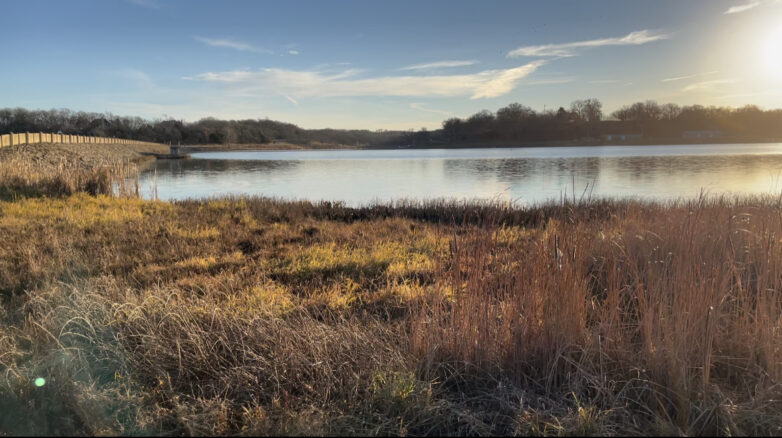
Why does Lone Star Lake exist?
The construction of Lone Star Lake was a direct response to New Deal legislation instituted during the Great Depression. In March 1933, President Franklin D. Roosevelt took office and quickly issued a series of programs and projects to combat the country’s economic instability and provide relief to the country’s record-breaking unemployment rate. According to The Library of Economics and Liberty, in 1933, 25 percent of all workers and 37 percent of all nonfarm workers were unemployed.
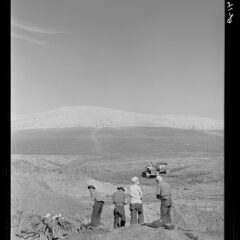
One of Roosevelt’s earliest and most successful executive orders was the Emergency Conservation Work Act of 1933, which authorized the new Civilian Conservation Corps program to recruit millions of young unemployed men to work on environmental conservation projects. CCC projects included a range of conservation and natural development work including reforestation in national and state parks, fighting soil erosion, and maintaining public trails and roads. Water control and recreation was another motivation for CCC projects, which is the reason Lone Star Lake exists. It was created for activities such as fishing, boating, and swimming. Not only did these projects improve public land, but they also encouraged citizens to experience and enjoy the outdoors.
Who Built Lone Star Lake?
In August 1934, the Civilian Lone Star Lake Park Conservation Corps began construction on a dam for the Forestry Fish and Game Commission. The 1,440-feet long, 45-feet high dam would hold back Washington Creek to create Lone Star lake’s reservoir (Lawrence Daily Journal-World, 1934). From 1934 to 1937, four CCC companies worked at the Lone Star site: Co. 2734 in August 1934, Co. 1764 in October 1934, Co. 767 in November 1935, and Co. 1728 in October 1936. In return for their labor, CCC workers received meals and lodging while earning around $30.00 a month. However, they were required to send a percentage of their wages back to their families.
In 1937, the Forestry Fish and Game Commission transferred the Lone Star Lake project to Douglas County for financial reasons. Douglas County completed the project in 1940 and continues to maintain the 422-acre park today, which includes the lake and campsite.
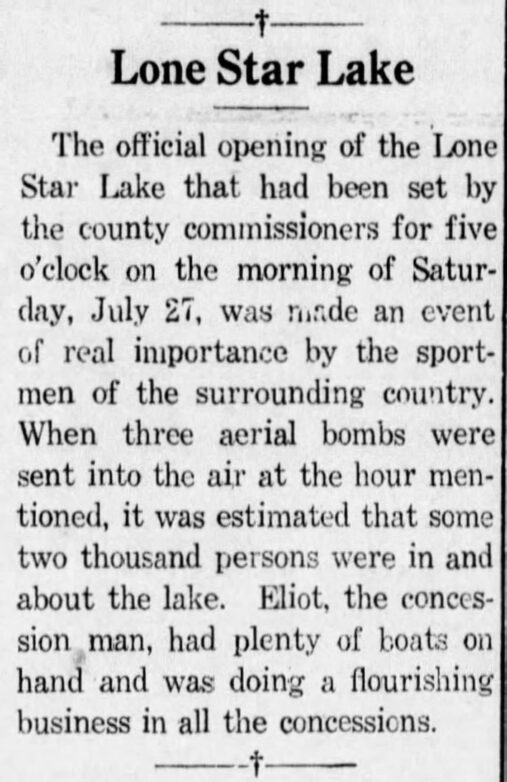
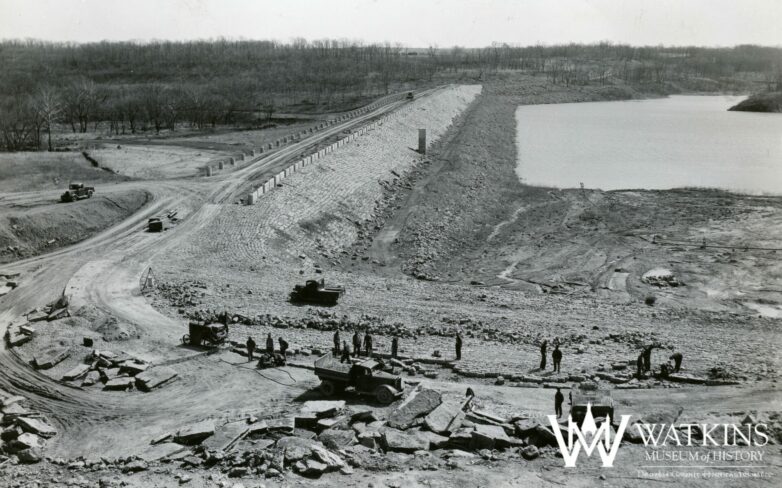
Donor: Agriculture Stabilization & Conservation Committee, 1985.143.002B
From 1933 to 1942, roughly 3 million men participated in the Civilian Conservation Corps program. The majority of CCC recruits were white, single, unemployed workers ranging in age from 18 to 25. Efforts to offer CCC enlistment to people of color is credited to an African American Congressman from Illinois named Oscar De Priest, who sanctioned a non-discriminatory clause against race, color, and creed in the CCC’s original legislation in 1933. However, despite the CCC having a non-discriminatory clause only 200,000 workers were African Americans and 80,000 were Native Americans.
Two of the four companies that worked on Lone Star were African American units. Both Co. 767 and Co. 1728. During this time, African American units lived and worked in segregated camps. It was also common for African American camps to be housed in isolated areas to avoid racial violence inflicted on Black corpsmen.

How do we preserve Lone Star Lake’s History for future visitors?
In addition to Lone Star Lake’s scenic beauty and rich history, the site also offers architectural significance. For instance, the dam and bridge are notable for their 1930’s Art Deco style. Similarly, the campsite’s water tower and fireplaces are prominent for their historical association with the original CCC campsite.
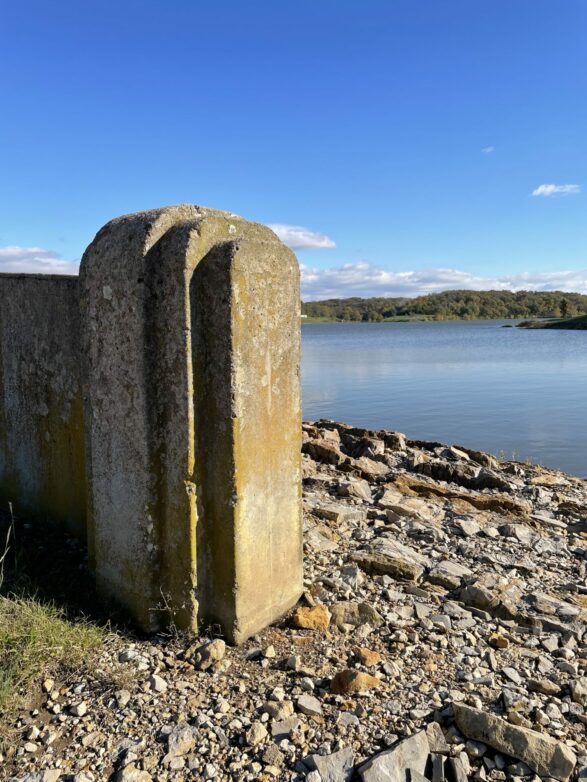
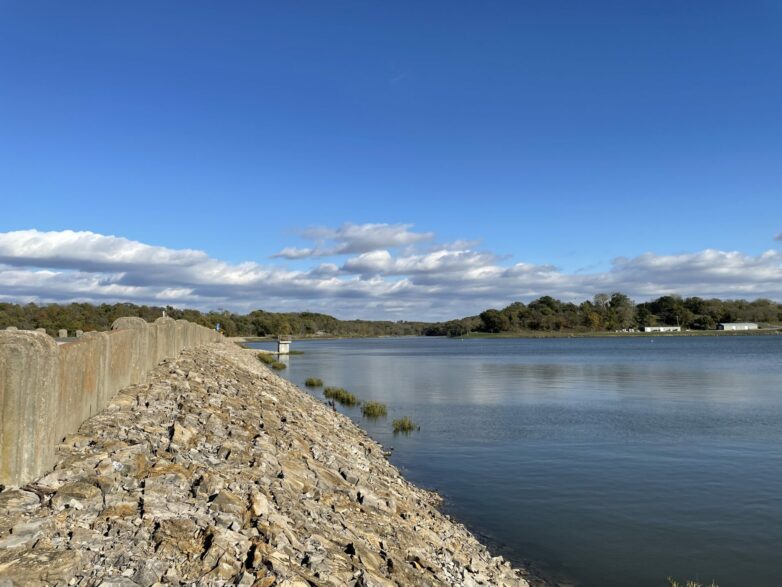
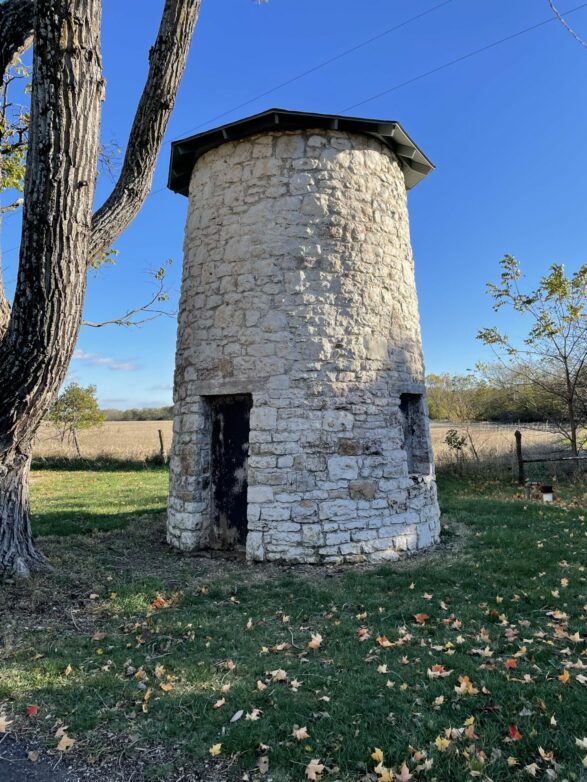
As of 2021, a group of Lawrence locals are working with Douglas County to nominate Lone Star Lake’s dam, bridge, and sections of the lake’s campground to be included on the National Register of Historic Places. To be eligible for the National Register of Historic Places, the property’s age, significance, and integrity are examined. If approved, sections of Lone Star Lake will be formally recognized, documented, and provided opportunity for future preservation. If Lone Star Lake is accepted by the National Register of Historic Place, it could lead to funding for more on-site historical interpretation. Looking toward the future, it will be essential to provide kiosks explaining the site’s significance and history to keep the CCC companies’ legacy and effort alive.
If you get the chance to visit Lone Star Lake, take it! While you are there exploring the lake, take a moment to consider the Civilian Conservation Corp’s legacy and their corpsmen’s efforts. Over 80 years have passed since the Emergency Conservation Work Act of 1933 and the community of Douglas County continues to benefit from their hard work. Together, let us stive for another 80 years of maintaining the beauty and heritage of Lone Star Lake.
References:
- California, C. S. P., State of. (n.d.). Civilian Conservation Corps: History Articles. CA State Parks. Retrieved December 6, 2021, from https://www.parks.ca.gov/
- Camps for African Americans and Native Americans. (n.d.). Digital Public Library of America. Retrieved December 6, 2021, from https://dp.la/exhibitions/civilian-conservation-corps/camps-african-american-native
- Editors, H. com. (n.d.). Civilian Conservation Corps. HISTORY. Retrieved December 6, 2021, from https://www.history.com/topics/great-depression/civilian-conservation-corps
- Great Depression. (n.d.). Econlib. Retrieved December 6, 2021, from https://www.econlib.org/library/Enc/GreatDepression.html
- How to List a Property—National Register of Historic Places (U.S. National Park Service). (n.d.). Retrieved December 6, 2021, from https://www.nps.gov/subjects/nationalregister/how-to-list-a-property.htm
- KHRI: Douglas County CCC Camp. (n.d.). Kansas Historical Society. Retrieved December 6, 2021, from https://khri.kansasgis.org/index.cfm?in=045-6388
- KHRI: Lone Star Lake & Douglas County CCC Dam. (n.d.). Retrieved December 6, 2021, from https://khri.kansasgis.org/index.cfm?in=045-6396
- “Lake Is Approved” Lawrence Daily Journal-World. 4 Jul. 1934, p. 1.
- “Lone Star Lake” The Lawrence Democrat. 1 Aug. 1940, p. 1.
- The Civilian Conservation Corps (U.S. National Park Service). (n.d.). Retrieved December 6, 2021, from https://www.nps.gov/articles/the-civilian-conservation-corps.htm
- Vachon, J., photographer. (1940) CCC Civilian Conservation Corps boys cooperating with Soil Conservation building erosion dam. Monona County, Iowa. United States Iowa Monona County, 1940. May. [Photograph] Retrieved from the Library of Congress, https://www.loc.gov/item/2017810273/.